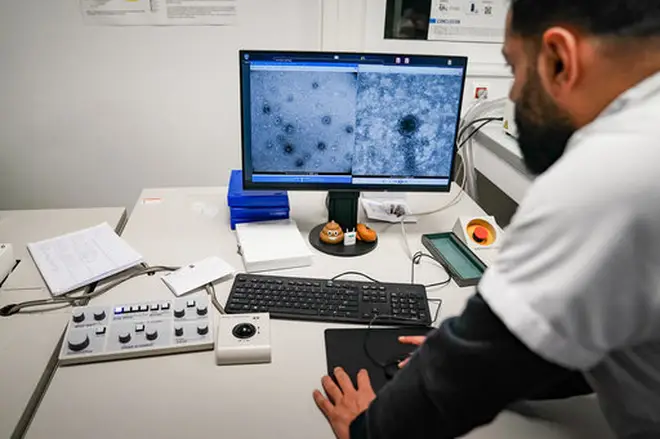
Shelagh Fogarty 1pm - 4pm
6 April 2020, 14:35

FullFact and Consultant Virologist bust coronavirus myths with Nick Ferrari
Nick Ferrari was separating fact from fiction on coronavirus with the help of a virus expert and the editor of a fact checking charity.
Tom Phillips is the editor of FullFact and was on hand to share with the public the findings of his research on coronavirus and to dispel rumours breaking out during the crisis. He was accompanied as a guest by Dr. Chris Smith, who is a consultant virologist at Cambridge University who was giving the ins and outs of the virus from a medical perspective.
The first coronavirus-related phenomenon Nick asked the experts to deconstruct is the most recent myth that has surfaced- can 5G cause coronavirus?
The editor of FullFact was the first expert to quell the hysteria, insisting that "5G conspiracies are completely baseless."
"This didn't just start with corona outbreak" he pointed out, mentioning theories of 5G masts causing cancer and effecting the brain waves of victims.
The fact checking expert told Nick that "trust is really important" and people should believe authorities and experts when they tell you that the rumours aren't true.
Dr. Smith chimed in on the argument, making the assertion that "coronavirus has spread in countries that don't have 5G" and therefore there is "no scientific evidence to suggest" a link between coronavirus spreading and 5G masts.
Dr. Smith was summoned upon to explain how the virus developed and became spread to humans. He began by telling Nick that most of these infections come about in the animal world and spread after humans begin "encroaching into the natural world".
He added that in the case of coronavirus, it came from the wet markets of Wuhan, China and was transmitted by the fusion of viruses from bats and pangolins. The transmission rate of viruses was also something that the virologist pointed out, stating that someone can have the virus without having any idea they're a carrier and spread it to another side of the world in the blink of an eye.
"You can take something from one part of the world to another part of the world without even knowing" he added. This, to Dr. Smith was the main factor in the spread and rise of coronavirus.
After some prominent cases of animals contracting coronavirus, the question of whether or not animals have the potential to spread the disease to humans.
Mentioning the case of a tiger in a New York zoo contracting coronavirus, Dr. Smith was quick to point out that it is reported that the tiger caught Covid-19 from a zookeeper.
Confessing, Dr. Smith admitted that the medical world doesn't yet know if humans can contract from animals, but insisted that "it's an active area of research."

Dr. Chris Smith again was quick to dismiss the theory that a DIY approach to hygiene during the coronavirus is dangerous, stating that people may not necessarily be protected by a home made sanitiser.
"Soap and water can't be beaten" the consultant virologist insisted. He made the case that soap is proven to be the best defence against the virus and if you get the formula wrong when making your own sanitiser "it might not work" adding that "you'll get a false sense of security" and may not be protected at all.
Dr. Smith was careful to say that the medical world is "almost certain that you can't" contract coronavirus twice.
He was cautious in his answer because it is not currently known for how long you are immune to coronavirus after being cured, but did make the point that "in the very short term it's certain you won't catch it again."
"Not only is there no evidence it was made in a lab, there's good evidence that it definitely wasn't made in a lab" FullFact editor Tom Phillips insisted.
Dr. Smith added that because "we can find the smoking gun" of where the virus originated and forensically investigate the virus. Because we can do this research it is "much more likely that nature did this" according to the experts.
Dr. Smith revealed that facemasks are "very effective if used in hospital by the right people" but they have to be the right mask that protects against Covid-19, which is so small that you can fit 10,000 viruses side by side on a pinhead.
"If you've got a mask that fits very well you're very well protected" the virologist said, although making the point that "if you're observing social distancing" then you're already essentially covered because you are making it very unlikely for the virus to be transmitted.
A caller asked the experts why there was a downgrade of the coronavirus in March from the highest danger to the next classification down.
Dr. Smith insisted that this was because it is acknowledged that Covid-19 is not as lethal as other category one afflictions like Ebola and thus couldn't be put in the same bracket. He acknowledged that the government should have in fact pointed this out before downgrading to prevent worry in the public.


